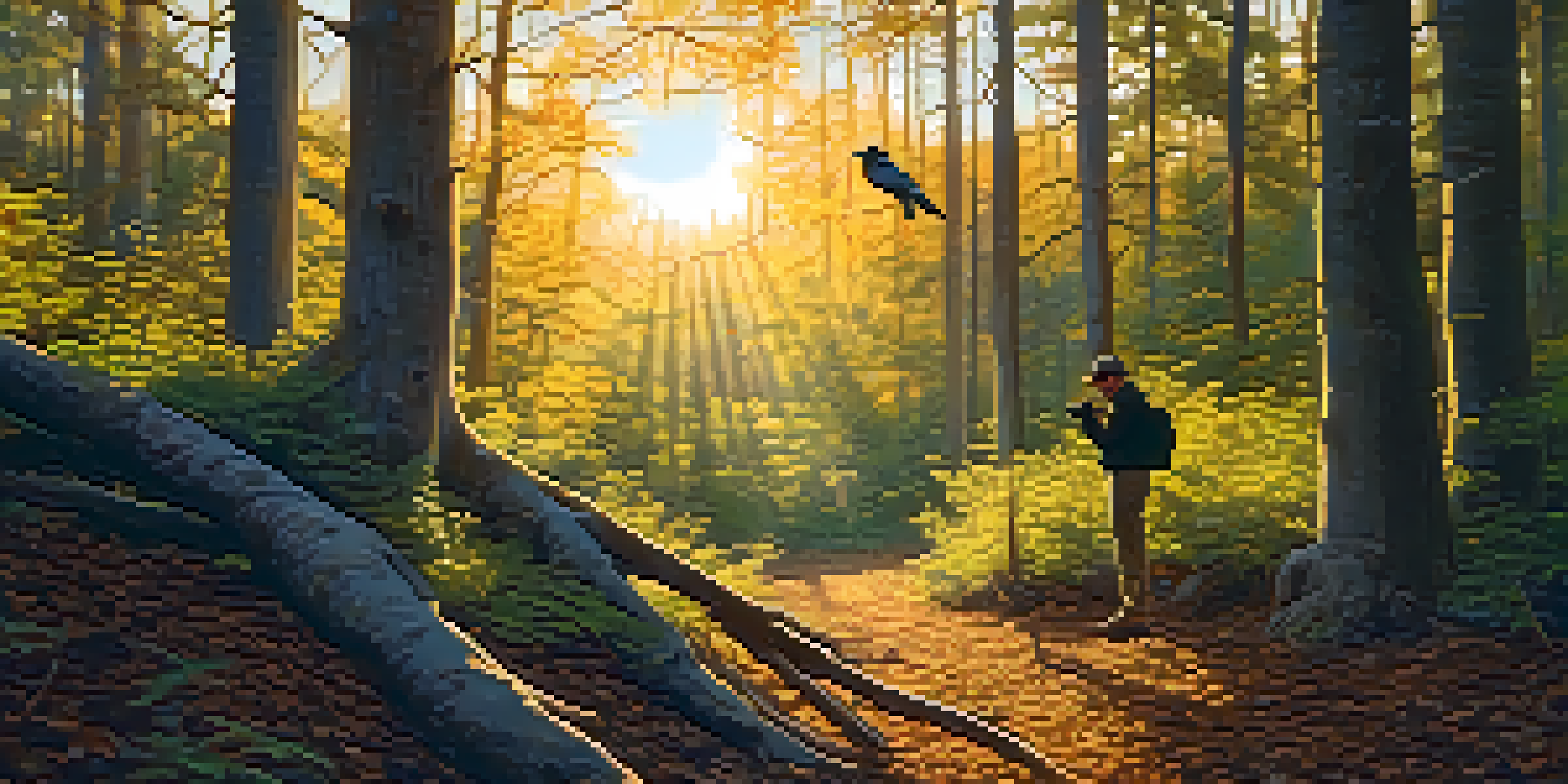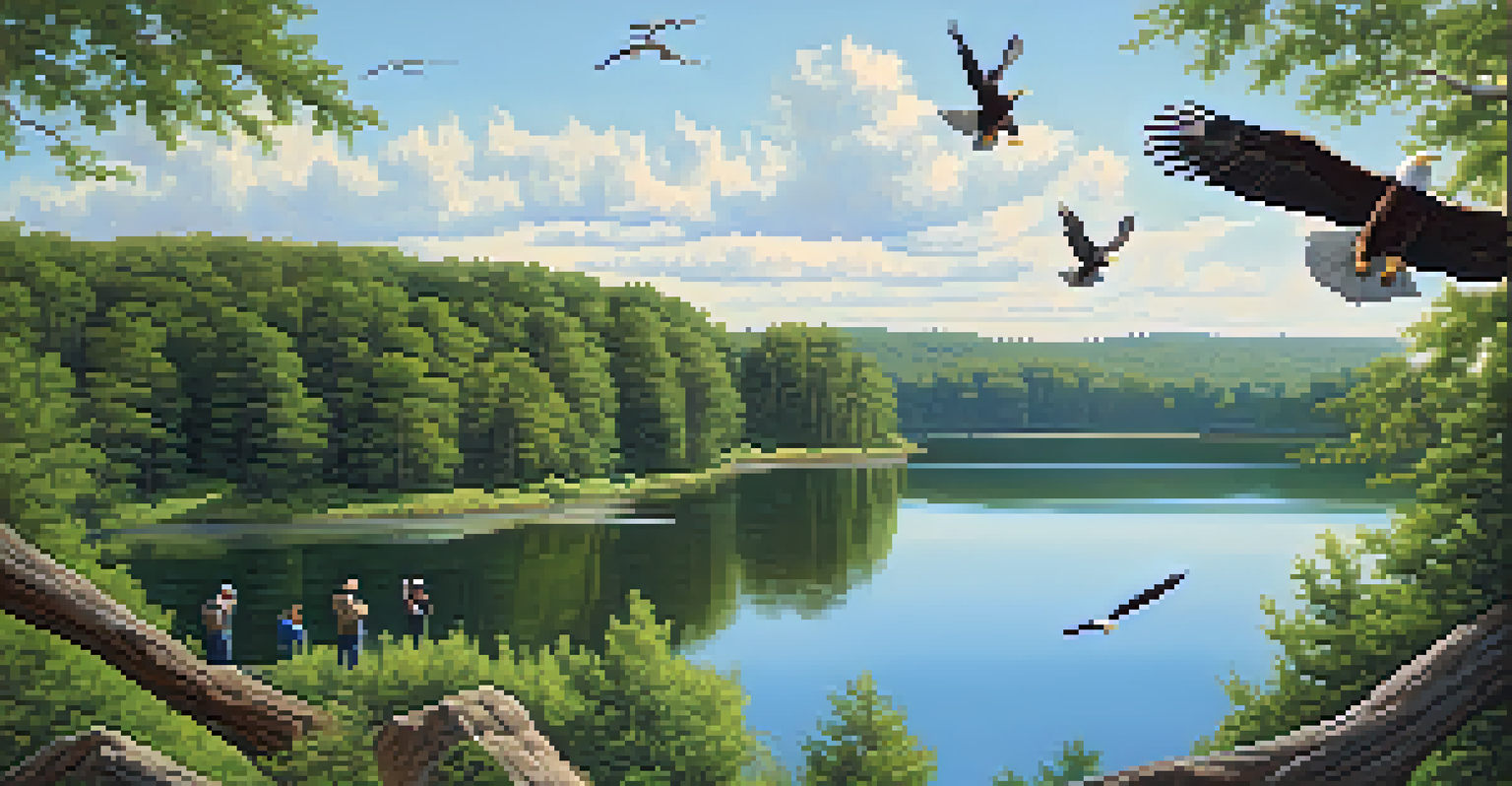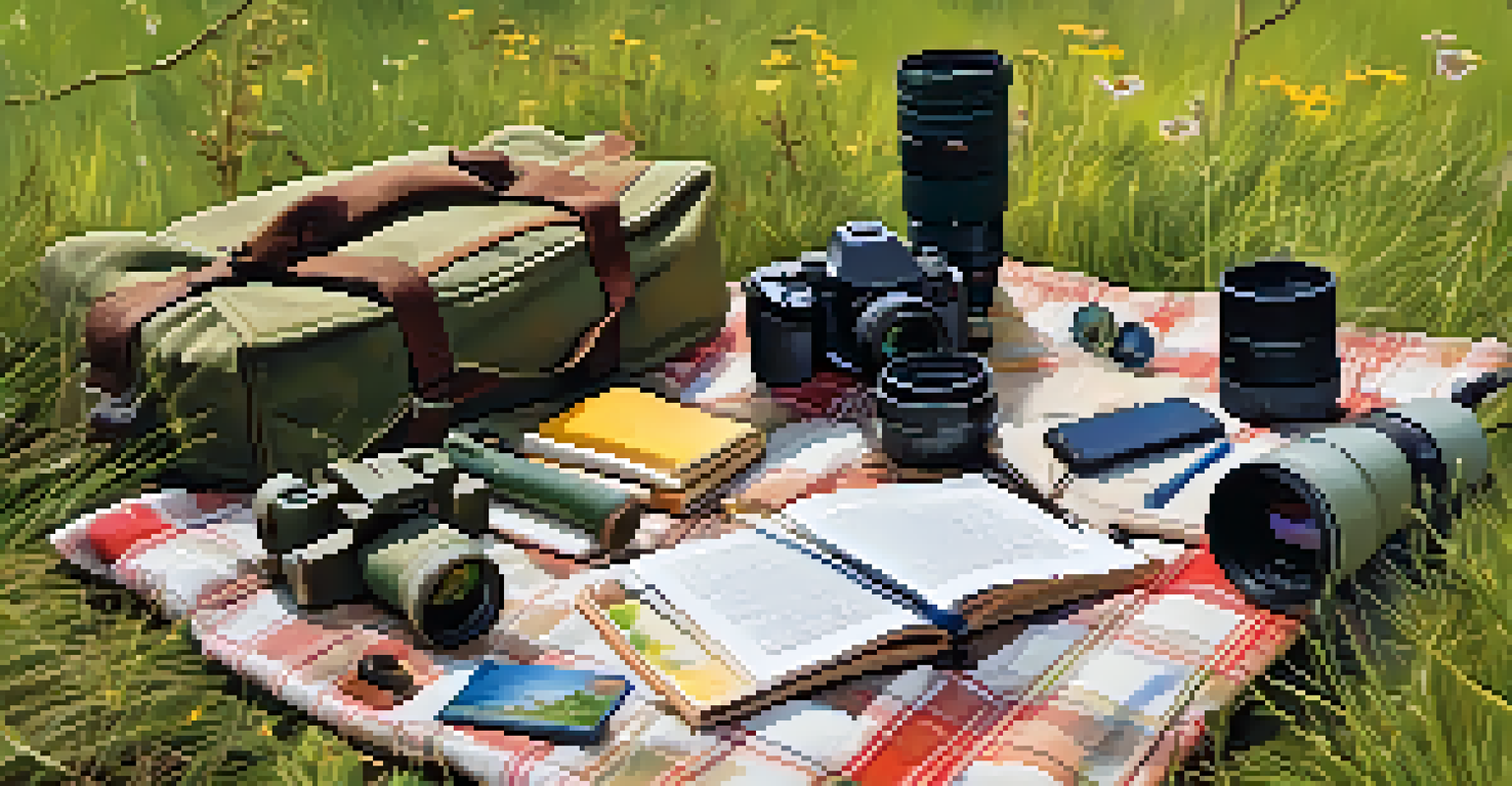Bird Watching Etiquette: A Guide for Big Bear Visitors

Understanding Bird Watching Etiquette Basics
Bird watching is more than just spotting birds; it's about respecting nature and fellow enthusiasts. Etiquette plays a crucial role in ensuring a pleasant experience for everyone involved. A few simple guidelines can go a long way in preserving the tranquility of the environment and the joy of watching birds.
In every walk with nature one receives far more than he seeks.
First and foremost, keep noise levels to a minimum. Birds are sensitive creatures, and loud sounds can scare them away. Instead of shouting to your friend across the trail, keep conversations quiet and in close proximity to avoid disturbing the wildlife.
Additionally, it’s important to be mindful of your surroundings. Stay on designated trails to protect habitats and avoid trampling delicate vegetation. This respect for nature not only enhances your experience but also ensures that future visitors can enjoy the same beauty.
Keeping a Respectful Distance from Birds
One of the key principles of bird watching etiquette is maintaining a respectful distance from the birds. Getting too close can stress them out and disrupt their natural behavior. Instead, use binoculars or a camera with a zoom lens to appreciate their beauty from afar.

Different species have varying tolerance levels for human presence. For instance, songbirds may be more skittish than larger birds like eagles or owls. Observing from a distance allows you to witness their natural behaviors without causing undue stress.
Respect Nature and Fellow Birders
Bird watching etiquette emphasizes the importance of maintaining a respectful distance from birds and fellow enthusiasts to ensure a pleasant experience.
Remember, the goal is to observe and appreciate birds in their natural habitat. By keeping your distance, you contribute to their well-being and ensure that your bird watching experience remains enjoyable and ethical.
Avoiding Disturbances in Bird Habitats
Bird habitats are delicate ecosystems that require protection from disturbances. When visiting Big Bear, it’s essential to avoid walking through nesting areas or sensitive habitats. Look for signs that indicate restricted zones and be sure to respect them.
The bird is powered by its own life and by its motivation.
Creating unnecessary disturbances can lead to abandonment of nests or altered behaviors in birds. If you spot a nest, maintain a safe distance and avoid lingering too long in the area. Your respect for their space contributes to healthy populations and thriving ecosystems.
Moreover, be cautious of your surroundings when using equipment like tripods or chairs. Avoid placing them in sensitive areas where they might damage vegetation or disturb wildlife. Being aware of your impact is a vital part of responsible bird watching.
Using Appropriate Birding Equipment
Using the right equipment can enhance your bird watching experience while adhering to etiquette. Binoculars are a must-have for getting a closer look at birds without intruding on their space. Choose a pair that is lightweight and easy to carry, as you may be walking for extended periods.
A field guide or birding app can also be incredibly helpful. These tools not only assist in identifying species but also provide insights into their behavior and habitats. Being knowledgeable about the birds you’re observing elevates your experience and fosters a deeper appreciation.
Use Proper Birding Equipment
Having the right tools, like binoculars and field guides, enhances your bird watching experience while helping you observe birds without intruding on their space.
Lastly, consider carrying a notebook or smartphone to jot down your observations. This practice not only enriches your understanding but also contributes to citizen science efforts. It’s a great way to engage with the birding community and share your findings with others.
Respecting Other Bird Watchers
Bird watching is often a shared experience, and respecting fellow birders is essential for a harmonious outing. When you encounter other enthusiasts, greet them politely and avoid blocking their view. A friendly nod or smile can create a sense of camaraderie among bird watchers.
If you spot an interesting bird, share the information without being overbearing. A simple, 'There's a rare bird over there!' can enhance the experience for everyone, but make sure to let them choose how close they want to approach. This respect for others’ enjoyment is what makes bird watching a community activity.
Moreover, be mindful of your space. If you're in a crowded area, try to keep your group compact and avoid spreading out too much. This consideration ensures that everyone has the chance to enjoy their birding experience without feeling crowded or rushed.
Adhering to Local Regulations and Guidelines
Every location has specific regulations and guidelines that help protect wildlife and ensure a positive experience for visitors. Familiarize yourself with these rules before heading out. In Big Bear, this may include designated viewing areas and restricted access to certain habitats.
Respecting these guidelines not only shows your commitment to responsible bird watching but also helps preserve the environment for future generations. Regulations are often in place for good reason, whether it’s to protect nesting sites or manage visitor traffic.
Follow Local Regulations
Adhering to local guidelines and regulations not only protects wildlife but also fosters a positive environment for all bird watchers.
Always check for updates on local regulations, especially during nesting seasons or migratory periods. Staying informed helps you make responsible choices and enhances your overall experience while enjoying the beauty of the avian world.
Concluding Your Bird Watching Adventure
As your bird watching adventure comes to a close, take a moment to reflect on your experiences. Consider the beauty you’ve observed and the importance of preserving these moments for future visitors. Bird watching is not just about the birds; it's also about the connection to nature and the community.
Before leaving, ensure that you leave no trace behind. Pack out any trash and avoid disturbing the environment. A clean environment not only respects wildlife but also creates a welcoming space for others who share your passion.

Finally, share your experiences with others! Whether through social media, local birding groups, or casual conversations, spreading the joy of bird watching encourages more people to appreciate and protect avian life. Your stories can inspire others to engage in this rewarding pastime.